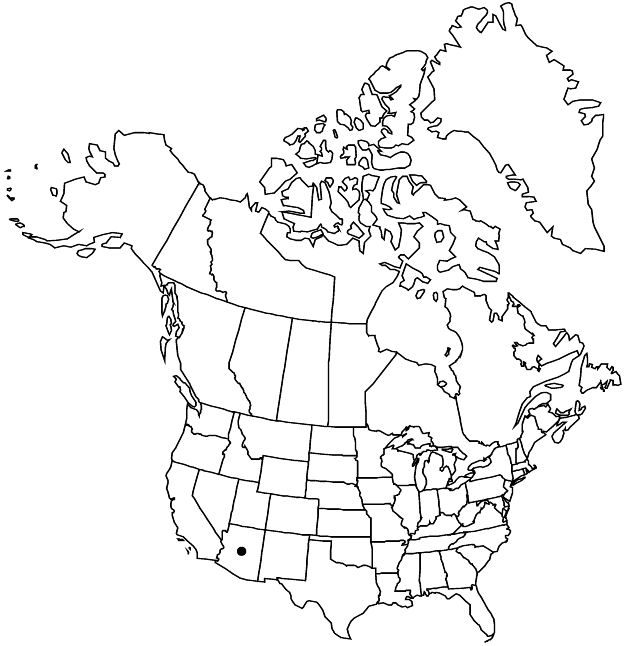Arceuthobium campylopodum subsp. blumeri
Phytoneuron 2012-51: 9. 2012.
Plants usually forming localized infections only, rarely forming witches brooms. Stems yellow, light green, or light tan, 6.5 (–18) cm; third internode 5–9.1 (–14) × 1–1.6 (–2) mm, dominant shoot 1–3 mm diam. at base. Staminate flowers 2.5–3 mm diam.; petals 3–4 (–6). Fruits 4 × 2.5 mm.
Phenology: Flowering Jul–Aug; fruiting Aug–Oct.
Habitat: Coniferous forests with southwestern white pine.
Elevation: 2100–3300 m.
Distribution

Ariz., Mexico (Chihuahua), Mexico (Durango), Mexico (Nuevo León)
Discussion
Meiosis occurs in July, with fruits maturing 13 to 14 months after pollination.
In addition to Pinus strobiformis, P. ayacahuite in Mexico is a principal host for subsp. blumeri. In the flora area, this subspecies occurs only in the Huachuca Mountains, but it is more widely distributed in the Sierra Madre Occidental of Chihuahua and Durango and is disjunct in the Sierra Madre Oriental on Cerro Potosí in Nuevo León. The molecular phylogenetic study by D. L. Nickrent et al. (2004) showed subsp. blumeri to be sister to the other members of sect. Campylopoda. Given that Mexico is likely the center of origin for Arceuthobium (Nickrent and M. A. García 2009), it is likely that subsp. blumeri represents an early diverging member of this species.
Selected References
None.